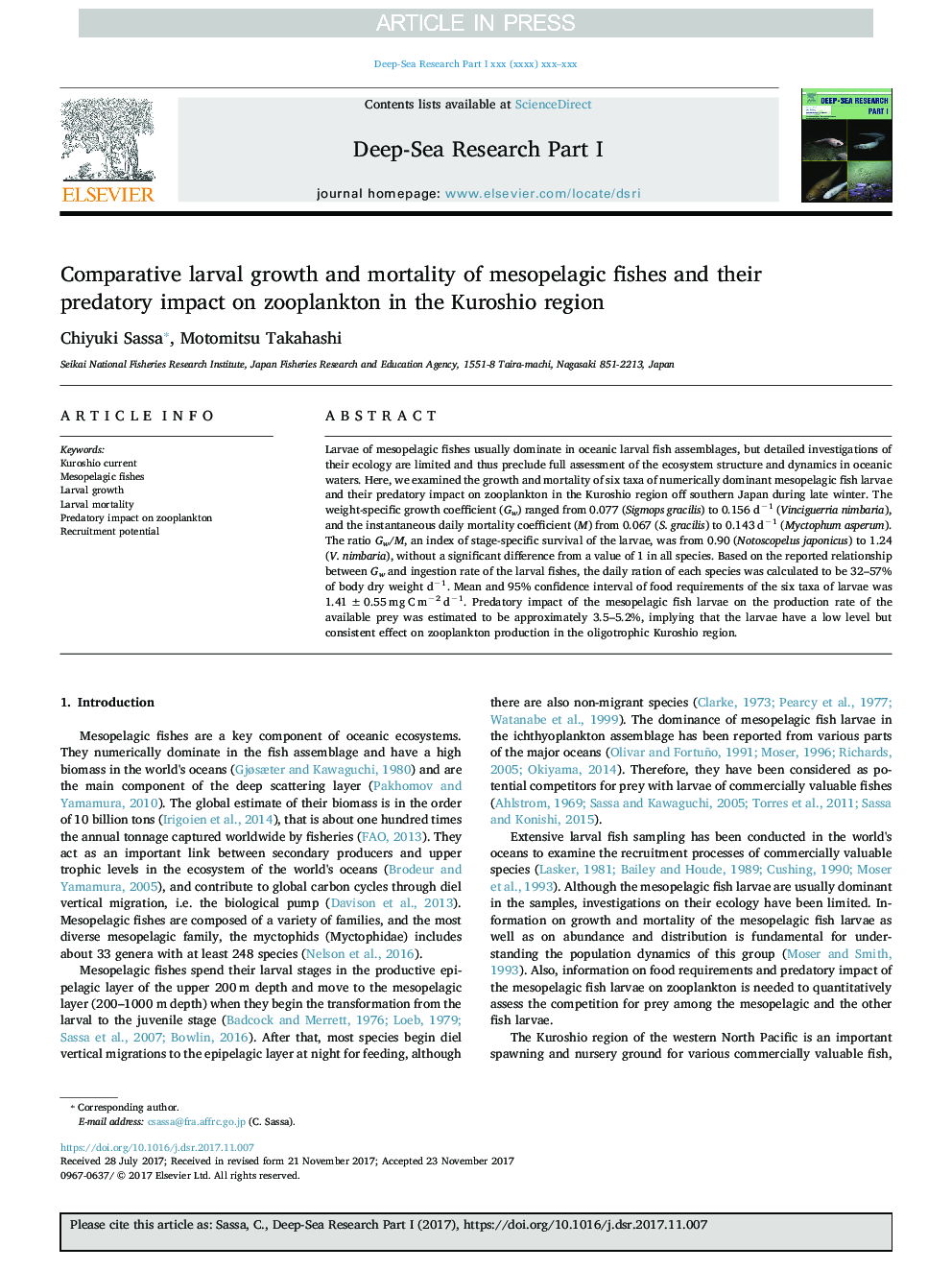| Article ID | Journal | Published Year | Pages | File Type |
|---|---|---|---|---|
| 8884298 | Deep Sea Research Part I: Oceanographic Research Papers | 2018 | 12 Pages |
Abstract
Larvae of mesopelagic fishes usually dominate in oceanic larval fish assemblages, but detailed investigations of their ecology are limited and thus preclude full assessment of the ecosystem structure and dynamics in oceanic waters. Here, we examined the growth and mortality of six taxa of numerically dominant mesopelagic fish larvae and their predatory impact on zooplankton in the Kuroshio region off southern Japan during late winter. The weight-specific growth coefficient (Gw) ranged from 0.077 (Sigmops gracilis) to 0.156 dâ1 (Vinciguerria nimbaria), and the instantaneous daily mortality coefficient (M) from 0.067 (S. gracilis) to 0.143 dâ1 (Myctophum asperum). The ratio Gw/M, an index of stage-specific survival of the larvae, was from 0.90 (Notoscopelus japonicus) to 1.24 (V. nimbaria), without a significant difference from a value of 1 in all species. Based on the reported relationship between Gw and ingestion rate of the larval fishes, the daily ration of each species was calculated to be 32-57% of body dry weight dâ1. Mean and 95% confidence interval of food requirements of the six taxa of larvae was 1.41 ± 0.55 mg C mâ2 dâ1. Predatory impact of the mesopelagic fish larvae on the production rate of the available prey was estimated to be approximately 3.5-5.2%, implying that the larvae have a low level but consistent effect on zooplankton production in the oligotrophic Kuroshio region.
Related Topics
Physical Sciences and Engineering
Earth and Planetary Sciences
Geology
Authors
Chiyuki Sassa, Motomitsu Takahashi,
